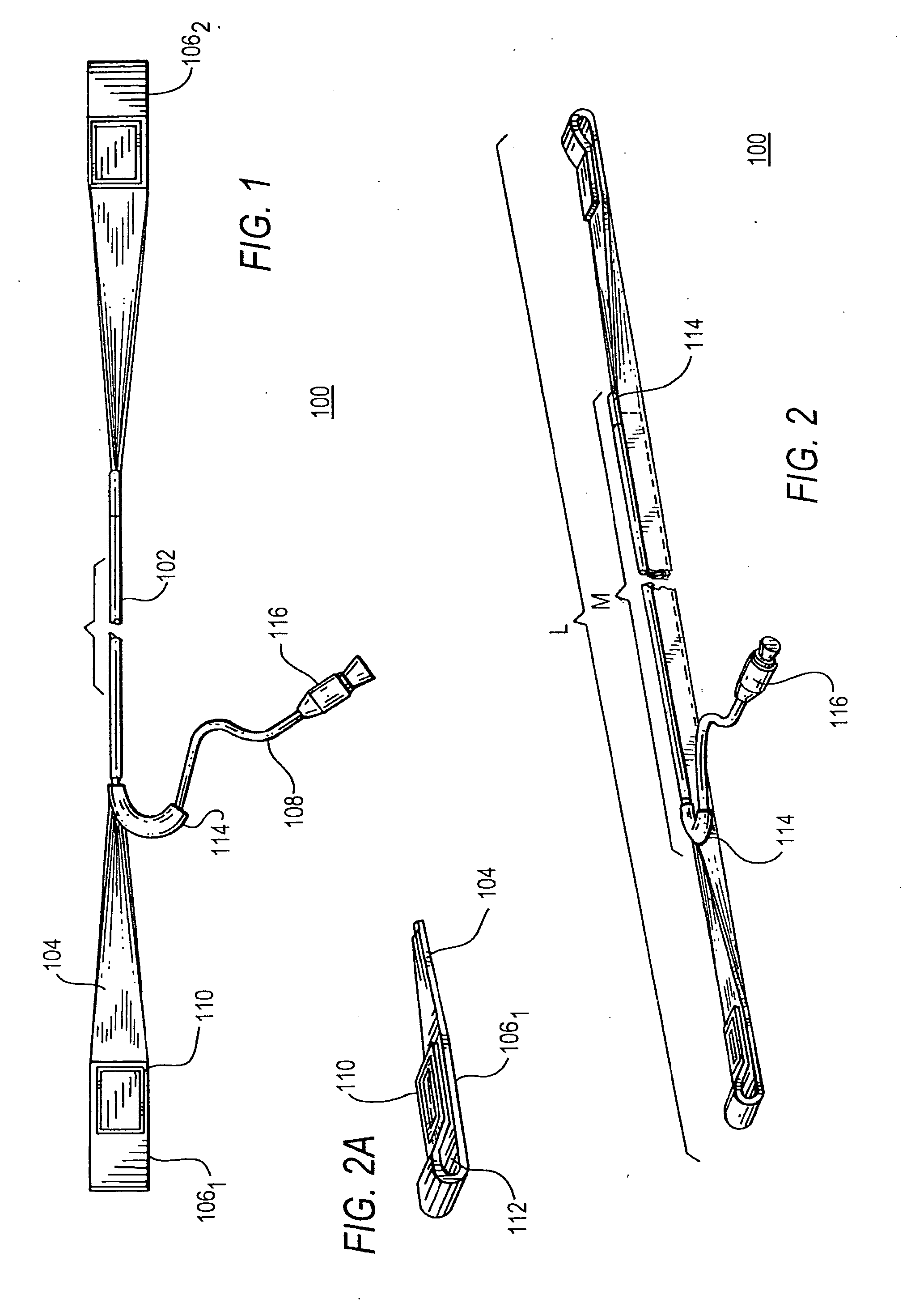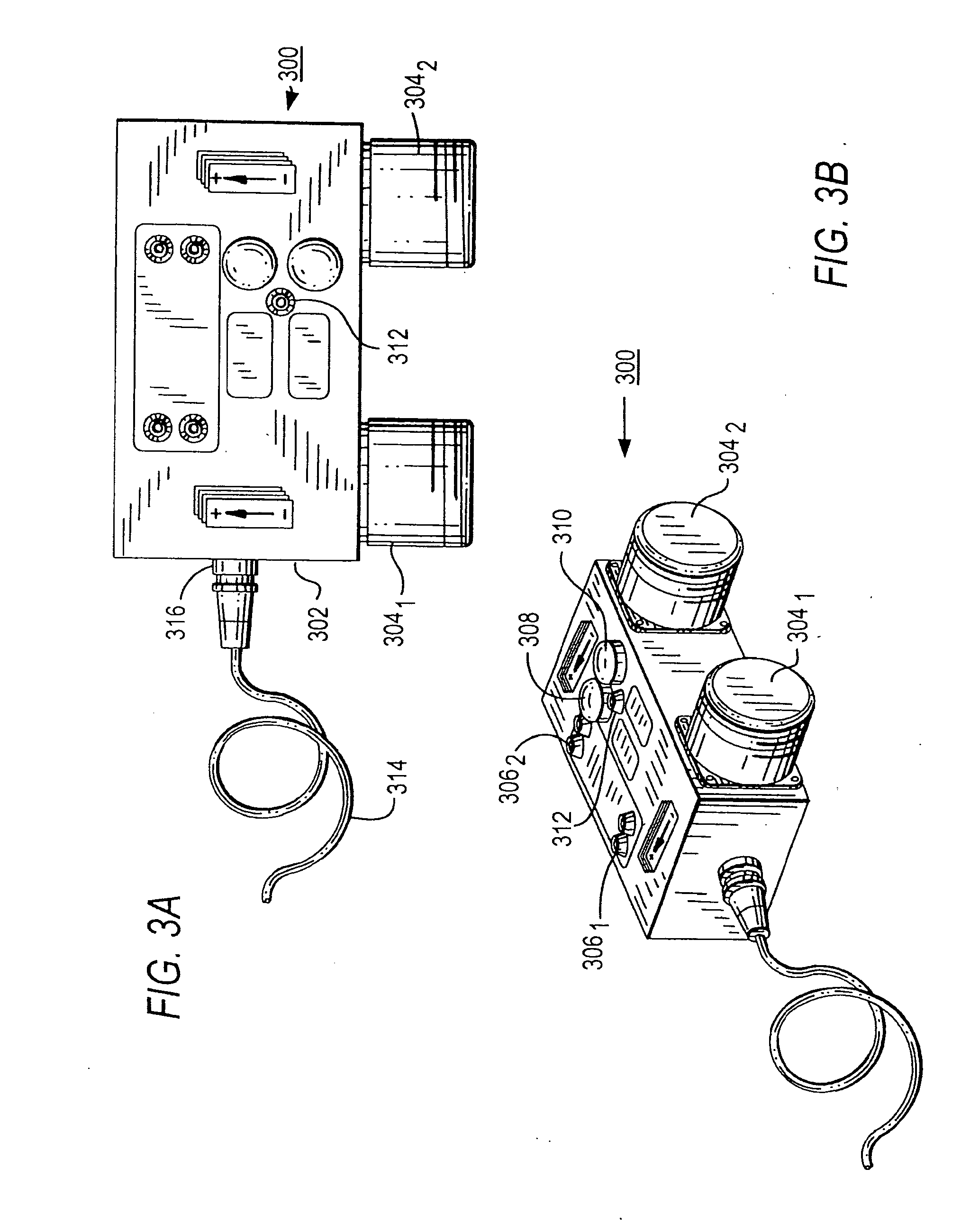Reinforced illuminable safety rope and deployment system
a safety rope and illuminating technology, applied in the field of safety ropes, can solve the problems of firefighters being constantly forced to enter darkened, smoke-filled environments, and reducing their ability to see, and achieve the effect of increasing strength
- Summary
- Abstract
- Description
- Claims
- Application Information
AI Technical Summary
Benefits of technology
Problems solved by technology
Method used
Image
Examples
first embodiment
[0052]Referring to FIG. 4, a first embodiment illustrating a section of the illuminable safety rope 100 of FIG. 1 is shown. The safety rope 100 includes an electroluminescent (EL) wire 402 having a predetermined length and an insulative covering 408 surrounding the EL wire 402 along the length, which together forms the EL cable 102. The EL wire 402 is formed by a core conductor or electrode 404 and a second electrode having luminescent particles or coating formed thereon. The fabrication and operation of the EL wire is provided for better understanding, but does not form a part of the present invention. However, for a detailed understanding of the fabrication and operation of an illustrative EL wire 402, as well and an EL cable 102, the disclosures of previously noted U.S. Pat. Nos. 3,819,973 and 5,869,930 provide illustrative examples.
[0053]The insulative covering 408 has a flange 410 protruding (i.e., extending) radially outward along the length “M” of the EL cable 102. The flange...
second embodiment
[0056]Referring to FIG. 5, the safety rope 500 is illustratively shown. The safety rope 500 includes the same EL cable 102 with the flange 410 as shown in FIG. 4, however, a flexible reinforcing wire 502 is positioned adjacent the edge portion 418 of the flange 410. The reinforcing wire preferably extends along the length “M” of the EL cable 102. Illustrative examples of a flexible reinforcing wire 502 suitable for use include copper or aluminum wires having a gauge in the range between 18 and 10 (AWG) or a cross-sectional area of 0.8 mm to 5.5 mm, although such dimensions are not considered limiting. A reinforcing wire fabricated from a non-metal material, such ceramic, glass rope and the like are also suitable for use in the present invention.
[0057]During manufacture, the pre-cut length of fabric is placed along the lower portion 414 of the flange 410 and wrapped around the reinforcing wire 502 positioned adjacent the flange edge 418, and over the top portion 416 of the flange 410...
third embodiment
[0059]Referring to FIG. 7, the safety rope 700 is illustratively shown. The safety rope 600 is the same as the safety rope 500 of FIG. 6, except that the reinforcing wire 702 includes two core elements 704 with an insulation cover, such as zip cord or twisted pair, positioned on the top portion 416 or bottom portion 414 (i.e., a side portion) of the flange 410. The fabric material 104 is wrapped around the bottom portion 414 and edge 418 portions of the flange 410, and then over double core reinforcing wire 702. The fabric 104 is then stitched 420 along the top and bottom of the safety rope 100 and through the opposing sides of the flange 410 as described above.
[0060]The safety rope 700 of FIG. 7 can be especially useful for providing a communication signal path to send a distress signal to other responders. In particular, the paired wire elements 704 can be coupled to a switch or button on the power supply 300 which can be activated to send an electrical signal from the responder t...
PUM
| Property | Measurement | Unit |
|---|---|---|
| weights | aaaaa | aaaaa |
| angle | aaaaa | aaaaa |
| weights | aaaaa | aaaaa |
Abstract
Description
Claims
Application Information
 Login to View More
Login to View More - R&D
- Intellectual Property
- Life Sciences
- Materials
- Tech Scout
- Unparalleled Data Quality
- Higher Quality Content
- 60% Fewer Hallucinations
Browse by: Latest US Patents, China's latest patents, Technical Efficacy Thesaurus, Application Domain, Technology Topic, Popular Technical Reports.
© 2025 PatSnap. All rights reserved.Legal|Privacy policy|Modern Slavery Act Transparency Statement|Sitemap|About US| Contact US: help@patsnap.com



